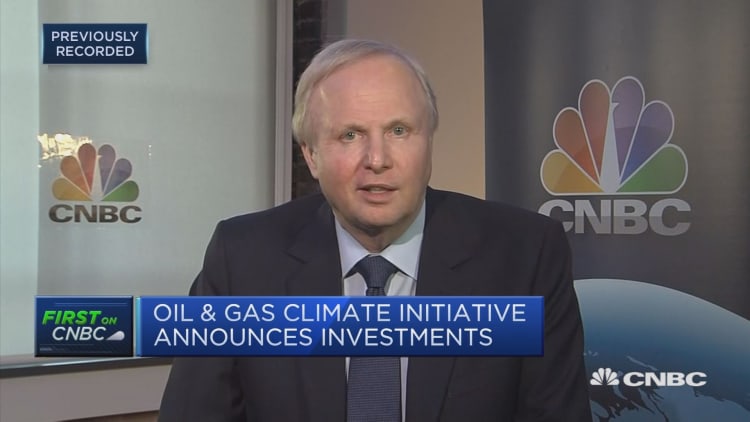The American shale drillers that have upended the energy industry will capture much of the growth in oil demand in the coming years, OPEC forecasts in a new report.
But after years of booming U.S. production and flat output from OPEC, the tables will turn, the producer group says.
The forecast, released Tuesday, signals that OPEC believes its battle for oil-market share against U.S. shale will persist for years to come.
The U.S. shale revolution paved the way for a three-year oil price downturn that sent crude spiraling from more than $100 a barrel in 2014 to about $60 today. That has piled pressure on the oil-dependent economies of OPEC nations and forced a round of production cuts this year.
The forecast for oil demand looks stronger than it did last year, according to OPEC. The group's prognosticators raised their projections for oil demand in 2022 by 2.2 million barrels a day in this year's World Oil Outlook report.

That's largely due to strong consumption in the developing world. But OPEC also expects demand to keep growing in developed countries until 2019, rather than peaking this year as earlier forecast.
OPEC now sees demand reaching 102.3 million barrels a day in 2022, up from 95.4 million barrels a day in 2016.
The United States will meet much of the world's growing appetite, increasing its oil output by 3.8 million barrels a day through 2022, OPEC says. That will be equal to about 75 percent of all supply growth outside the 14-member OPEC, which provides about one-third of the world's crude.
Much of that growth will come from U.S. shale fields, where drillers use advanced methods like hydraulic fracturing to coax oil and gas from shale rock formations.
However, OPEC sees production of this so-called tight oil from the United States and elsewhere — including Canada, Russia and Argentina — peaking in 2025. Output will boom in part because shale producers are focusing on drilling their best acreage, where they can extract oil and gas at relatively low cost. Shale wells initially produce a lot of oil, but their output declines rapidly.

"This growth is heavily front-loaded, as drillers seek out and aggressively produce barrels from sweet spots in the Permian and other basins," OPEC said, referring to the epicenter of the U.S. drilling activity in Texas and New Mexico.
Around the same time that shale production peaks, years of weak growth from OPEC nations will come to an end, in the group's view.
After stagnating at just more than 33 million barrels a day, OPEC's output will raise sharply to 41.4 million barrels a day by 2040. In that case, OPEC's share of the global market for crude oil and other liquids will grow from 40 percent last year to 46 percent in 2040.
"Thus, the long-term focus for additional liquids demand remains on OPEC," the group said.
Oil demand will grow to 111.1 million barrels a day by 2040, but that growth will slow down as the years grind on, according to OPEC's latest forecast.
By 2040, OPEC thinks oil and natural gas will still account for more than half of the world's total power generation.


